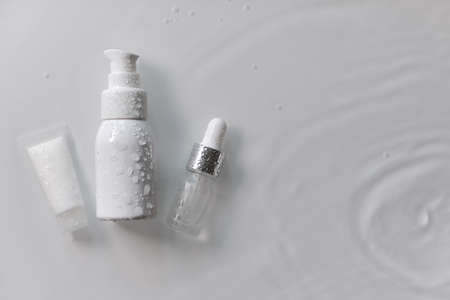Understanding Serum Layering Basics
Serum layering has become a buzzworthy concept in the American skincare scene, but what exactly does it mean? At its core, serum layering involves applying multiple serums—each packed with active ingredients—one after another to target different skin concerns. This technique allows you to personalize your routine, addressing everything from dryness and dullness to acne and fine lines all at once. Why does this matter? Because not all skincare actives play nicely together, and getting the order right can make or break your results. Think of serum layering like building a sandwich: each ingredient has a purpose, and stacking them correctly ensures you get the most flavor (or in this case, benefits). Done right, layering serums can seriously elevate your daily regimen, helping your skin look healthier and more radiant than ever. Whether you’re a skincare newbie or a seasoned enthusiast, understanding the basics of how serums interact is key to unlocking the full potential of your products while keeping your skin safe and happy.
2. Know Your Actives: Common Ingredients and Their Benefits
Before you start layering serums, it’s important to get familiar with the most popular skincare actives and what they can do for your skin. Serums often pack a concentrated punch of ingredients designed to target specific concerns—think everything from brightening dull skin to fighting breakouts or hydrating dry patches. Here are some of the most common actives found in American skincare routines:
| Active Ingredient | Main Benefit | Best For |
|---|---|---|
| Vitamin C (Ascorbic Acid) | Brightens skin, evens tone, protects against environmental damage | Dullness, hyperpigmentation, all skin types |
| Retinol (Vitamin A) | Boosts cell turnover, smooths fine lines, reduces acne | Aging skin, acne-prone skin (avoid if pregnant) |
| Hyaluronic Acid | Deep hydration, plumps skin, soothes dryness | Dry, dehydrated, or sensitive skin |
| Niacinamide (Vitamin B3) | Reduces redness, minimizes pores, regulates oil production | Oily, combination, or sensitive skin |
| Salicylic Acid (BHA) | Cleans out pores, exfoliates, fights acne-causing bacteria | Acne-prone or oily skin types |
| Lactic Acid (AHA) | Mild exfoliation, improves texture and radiance | Sensitive or dry skin needing gentle exfoliation |
| Peptides | Supports collagen production, firms and strengthens skin barrier | Aging or stressed skin looking for resilience boost |
Pro tip: When choosing serums to layer, pay attention not only to the main benefit but also to how each active fits your unique skin needs. For example, Vitamin C is a daytime favorite in the U.S. because it helps protect against pollution and sun damage when paired with sunscreen. Retinol is usually reserved for nighttime use to support overnight repair. Hyaluronic acid is a universal hydrator that can be used both morning and night—especially helpful in dry climates like much of the U.S. Midwest and Southwest. Understanding these basics sets you up for safe and effective serum layering tailored to your American lifestyle.

3. The Right Order: How to Layer Serums for Maximum Effectiveness
Layering serums in the correct order is key to maximizing their benefits and ensuring your skin absorbs every active ingredient efficiently. Think of your skincare routine as building a foundation—each step preps your skin for the next, and applying products in the wrong sequence can dilute their effectiveness or even cause irritation.
Start with Clean Skin
Always begin with freshly cleansed skin. This removes any dirt, oil, or leftover makeup that could block serums from penetrating deeply. If you use a toner, apply it right after cleansing to balance your skin’s pH and prep for serum absorption.
Water-Based Serums Go First
Serums with a lightweight, water-based formula should always be applied before anything heavier. These typically include serums with ingredients like hyaluronic acid, niacinamide, or vitamin C. Water-based serums absorb quickly and deliver hydration and actives deep into the skin.
Tip: Wait Between Layers
Let each serum fully absorb before moving to the next step—usually 30 seconds to a minute does the trick. This helps prevent pilling (when products ball up on your skin) and ensures each active gets its time to shine.
Follow with Oil-Based Serums
After water-based formulas, move on to oil-based serums or facial oils. These create a barrier that locks in moisture and previous layers. Ingredients like squalane, rosehip oil, or marula oil are common in this category.
The Golden Rule: Thin to Thick
A good rule of thumb? Apply products from thinnest to thickest consistency. This allows lighter serums to penetrate first while richer ones seal everything in.
Avoid Mixing Incompatible Actives
Some actives don’t play well together—for example, avoid layering strong retinoids with vitamin C or benzoyl peroxide in one routine. Always check product instructions or consult a dermatologist if you’re unsure about combining certain ingredients.
Finish with Moisturizer and SPF
Once all your serums are applied and absorbed, seal everything in with a moisturizer. In the morning, finish off with a broad-spectrum sunscreen—this is non-negotiable when using potent actives!
4. Compatibility Check: What Ingredients Can (and Can’t) Mix
Before you start stacking your serums, its crucial to know which ingredients can safely be layered and which combinations should be avoided. Some actives work synergistically to boost results, while others can trigger irritation or cancel each other out. Let’s break down the dos and don’ts of serum layering to help you make the smartest choices for your skin.
Serum Ingredients That Work Well Together
| Ingredient 1 | Ingredient 2 | Benefits of Pairing |
|---|---|---|
| Vitamin C | Vitamin E + Ferulic Acid | Boosts antioxidant protection and stability |
| Hyaluronic Acid | Almost Any Active | Provides hydration and enhances absorption |
| Niacinamide | Zinc or Hyaluronic Acid | Soothes skin and controls oil production |
| Retinol | Peptides | Supports skin renewal without extra irritation |
| AHA/BHA (Exfoliating Acids) | Hyaluronic Acid or Ceramides | Replenishes moisture after exfoliation |
Combinations to Avoid (and Why)
| Do Not Mix | Main Reason to Avoid | Potential Effects on Skin |
|---|---|---|
| Retinol + Vitamin C (Ascorbic Acid) | Poor pH compatibility; may reduce effectiveness of both ingredients | Irritation, redness, decreased benefits |
| AHA/BHA + Retinol | Both are potent exfoliants; combo can severely irritate skin barrier | Sensitivity, peeling, inflammation |
| Benzoyl Peroxide + Retinol or Vitamin C | Benzoyl peroxide oxidizes other actives, rendering them ineffective | Ineffective results, dryness, irritation |
| Niacinamide + Vitamin C* | *Old research suggested incompatibility; newer studies show they’re generally safe together but may still cause flushing in sensitive skin. | Mild flushing or stinging in rare cases—patch test first! |
| Copper Peptides + Vitamin C/Direct Acids/Retinoids | Chemical interactions may destabilize peptides or acids/retinoids. | Ineffective products, wasted actives, potential for irritation. |
The Science Behind Ingredient Compatibility
Your skin’s pH level is a big factor in ingredient compatibility. For example, Vitamin C (ascorbic acid) works best at a low pH (acidic), while retinol and peptides prefer a neutral environment. Mixing them can compromise their effectiveness—or worse, trigger sensitivity. Plus, using too many strong actives at once overwhelms your skin barrier, leading to redness or breakouts.
Pro Tip:
If you want to use actives that don’t play well together, alternate them—apply one in the morning and the other at night, or use them on different days. Always listen to your skin: when in doubt, patch test first and introduce new combos slowly for best results.
5. American Skincare Habits: Making Layering Work With Your Routine
Life in the U.S. can be fast-paced, making it tough to stick to a multi-step skincare routine every single day. But with smart strategies, serum layering can fit right into your American lifestyle—whether you’re heading out early for work or winding down late after a long day. Here’s how to make serum layering practical, efficient, and effective.
Quick Tips for Busy Mornings
If you’re rushing out the door, keep your morning regimen streamlined. After cleansing, apply a vitamin C serum to brighten and protect against pollution and sun damage—perfect for urban commutes. Follow with a lightweight hyaluronic acid serum if your skin is dry, then top with moisturizer and SPF. Stick to two serums max to avoid pilling and save time.
Nighttime Layering for Recovery
Evenings are ideal for richer actives since your skin repairs overnight. After cleansing, start with a gentle exfoliating serum (like AHA or BHA) two or three nights a week, followed by a nourishing peptide or retinol serum. Let each layer absorb for at least 30 seconds before moving on. End with a hydrating moisturizer—especially important in air-conditioned American homes.
Adapting to Your Schedule
Not every day needs the full lineup. On busy days, pick one targeted serum that addresses your main concern (like dullness or breakouts). On weekends or self-care nights, indulge in more layers and take your time to massage each product in.
Pro Tips for the American Lifestyle
– Keep travel-sized serums in your gym bag or desk drawer for on-the-go touch-ups.
– Use multitasking products (like serums that combine antioxidants and hydration) to cut down on steps.
– Remember: Consistency is key, not perfection! Adjust your layering routine as needed—your skin will thank you for even small efforts.
6. Troubleshooting & Tips: Avoiding Irritation and Sensitivity
Even when you follow all the rules for serum layering, sometimes your skin can react unexpectedly. If you notice redness, stinging, or new breakouts after introducing a new serum or active, don’t panic—these issues are pretty common and often easy to fix.
Common Problems with Serum Layering
Redness or Burning: This usually means one of your actives is too strong for your skin or you’re using too many at once. Ingredients like retinol, vitamin C, and acids (like AHAs/BHAs) can be especially irritating if layered together without caution.
Pilling: If your serums start to ball up on your skin, you might be using too much product or combining formulas that don’t play well together. Try letting each layer absorb completely before adding the next.
How to Patch Test Like a Pro
If you’re trying a new serum or active ingredient, always patch test first. Apply a small amount on your inner forearm or behind your ear and wait 24 hours. Watch for any redness, itching, or swelling. If all looks good, it’s likely safe for your face.
Adjusting Your Routine for Comfort
If irritation pops up, simplify your routine right away. Drop all actives for a few days and focus on gentle cleansers and moisturizers until your skin calms down. Once things are back to normal, reintroduce one serum at a time every few nights—this way, you can spot what triggers a reaction.
Extra Tips for Happy Skin
- Never mix strong actives (like retinol and vitamin C) unless you know your skin can handle it.
- Always apply sunscreen in the morning if you’re using exfoliating acids or retinoids at night.
- If in doubt, consult a dermatologist before experimenting with multiple actives.
Remember: Skincare is personal! What works wonders for someone else might not suit your skin. Take it slow, listen to your body, and adjust as needed for your healthiest glow yet.
Final Thoughts: Building a Personalized, Safe Serum Stack
At the end of the day, skincare isn’t one-size-fits-all—especially when it comes to layering serums packed with powerful actives. The best serum routine is the one that’s tailored to your unique skin type, concerns, and goals. Whether you’re battling breakouts, chasing that dewy glow, or looking to smooth out fine lines, understanding how your skin responds to different ingredients is key.
Know Your Skin Type and Its Needs
Start by identifying whether your skin is oily, dry, sensitive, combination, or acne-prone. This will help you determine which actives are most beneficial—and which ones to avoid. For example, oily or acne-prone skin might benefit from niacinamide and salicylic acid, while drier complexions might crave hydrating serums with hyaluronic acid or ceramides.
Patch Test New Products
No matter how trendy an active ingredient is, always patch test new serums before adding them into your routine. This simple step can save you from irritation and unexpected reactions down the line.
Layer Gradually and Listen to Your Skin
When introducing new serums or combinations, go slow. Add one product at a time and observe how your skin reacts over a few days before introducing another. If you notice redness, stinging, or increased sensitivity, scale back and re-evaluate your stack.
Consult the Pros
If you’re unsure about mixing certain actives or have stubborn skin concerns that just won’t budge, don’t hesitate to consult a dermatologist or licensed esthetician. They can help you create a custom regimen that maximizes results without compromising your skin’s health.
Ultimately, building a safe and effective serum stack is all about personalization—listening to your skin, respecting its limits, and adjusting as needed. With thoughtful layering and expert-backed advice, you’ll be well on your way to achieving your healthiest complexion yet. Remember: good skincare isn’t about following every trend; it’s about finding what works for you.

